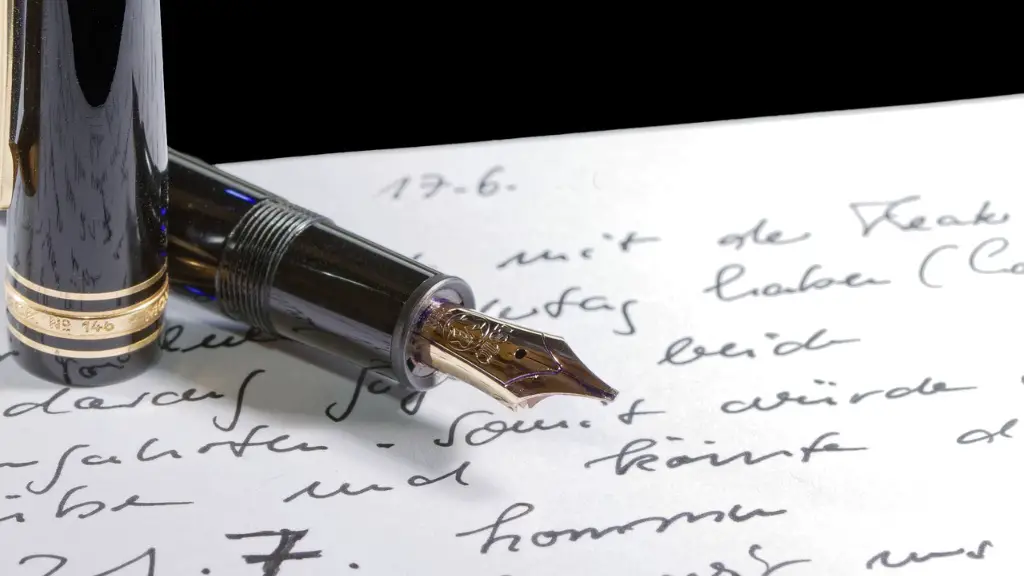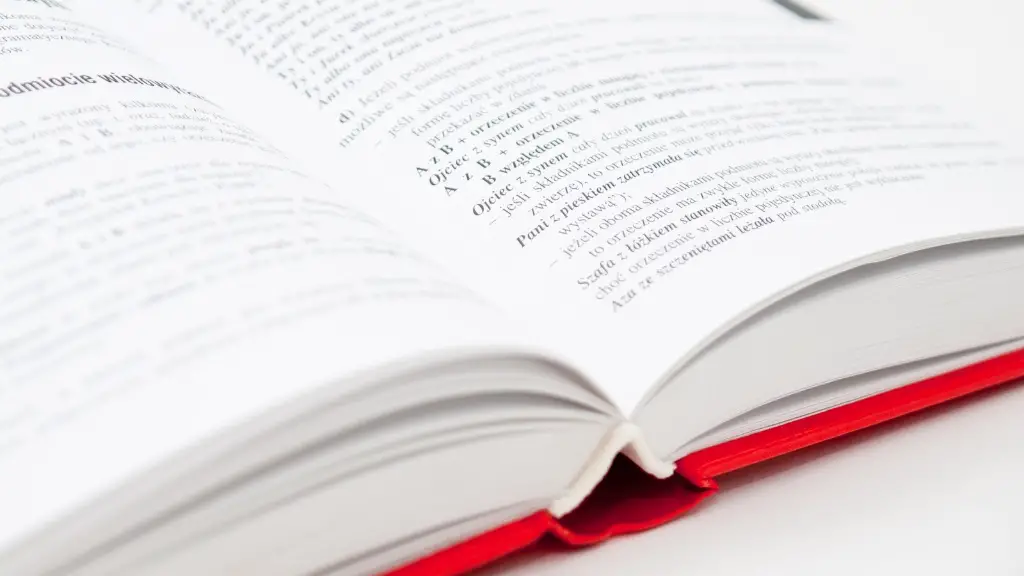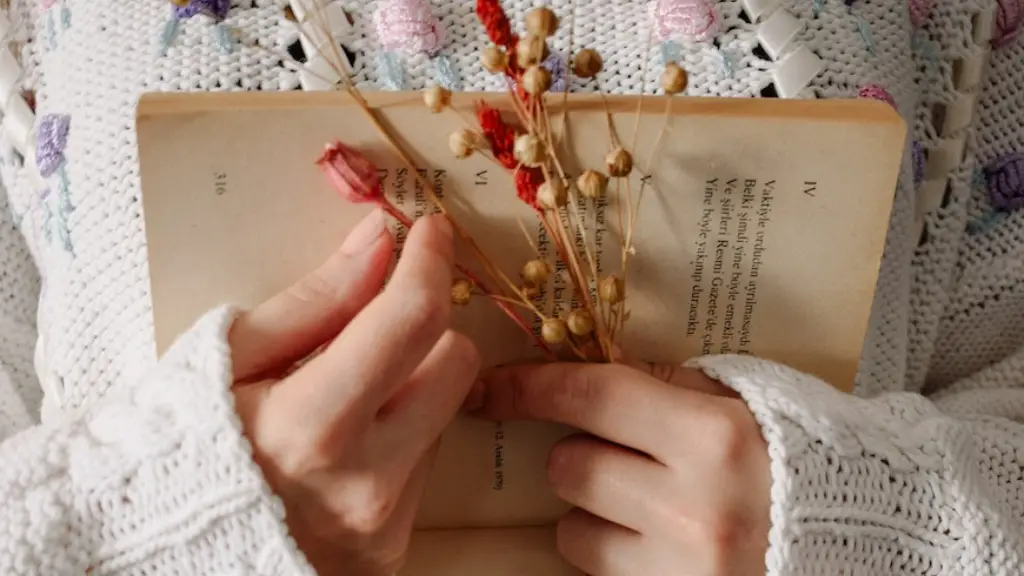What is Point of View in Poetry
A point of view, or POV, is the perspective or stance of a narrator in a poem or story. It is crucial to consider the character’s perspective and point of view when analyzing a poem, as it can provide insight into the poem’s purpose, ideas and implications.
When determining a poem’s point of view, it is helpful to first consider the type of narrator being used and the poem’s structure. In general, poetry can be narrated by either the narrator, who is often the author, or by a character in the poem. Narrators can be either autobiographical, which implies that the poet is one of the characters, or entirely fictional, which involves the poet introducing a story and characters.
When analyzing a poem’s point of view, it is also important to consider its structure or form. Poetry – like any piece of literature – can be structured in a variety of ways, ranging from an open narrative poem to a lyric poem. The structure of a poem can suggest quite a lot about the point of view, however even if the point of view is not explicit, it is still necessary to identify.
In addition to identifying the point of view, it is also important to identify what role the narrator plays in the poem. Generally, the point of view the narrator has in a poem can often be categorized as one of the five principal narrative voices: first person, third person limited, third person omniscient, second person and third person objective. In some cases, the narrator might even be unreliable, which implies that we as readers should use caution in accepting their point of view.
Experts in the field of poetry argue that, when trying to understand a poem, it is always beneficial to consider the point of view of the poem’s narrator. Doing so can give us insight into who is telling us the poem’s story, and why the poem is being written. This understanding can also help us to connect the poem to the context and themes within the poem, as well as how the poem fits into the bigger picture of the poet’s works, or even a greater literary period.
Studying the point of view within poetry is key to deeper analysis. By understanding the point of view of the poet’s narrator, readers get an understanding of who is speaking and what they are attempting to convey. This understanding can allow us to gain further insight into the poem’s themes, language and structure – enabling us to experience the poem more fully and grasp its implications.
Typing of Poetry
The type of poetry can often times determine the point of view taken. For example, a narrative poem’s point of view may consist of a distant narrator, whereas a lyric poem can take on a much more personal point of view, such as the voice of the speaker. Lyric poetry often consists of a speaker speaking in their own voice, offering the reader insight into their thoughts, feelings, and opinions about their experience.
For example, in Robert Frost’s “The Road Not Taken,” the narrator speaks in the first-person, as if they are directly addressing the reader. With this type of point of view, readers gain access to the narrator’s inner thoughts, allowing them to gain insight into how the narrator views the world.
In contrast, “The Raven” by Edgar Allen Poe has a much more distant point of view. In this poem, the narrator is outside of the story, merely reporting the events and watching them unfold. This type of point of view creates more separation between the narrator and readers, as the reader gains more of an observer’s point of view, rather than an emotional one.
Thus, the type of poetry employed by the poet can give readers an indication of the point of view they should expect. It is always important to take the type of poetry into consideration when attempting to identify a poem’s point of view.
Evaluating Point of View
When trying to determine a poem’s point of view, it is important to consider the following: first, identify the type of narrator being used. Is the point of view being narrated by the author or by a character within the poem? Second, identify the structure of the poem. Does it have a narrative structure, or is it more of a lyric poem? Finally, identify what role the narrator plays in the poem. Is the point of view first person, third person limited, third person omniscient, second person, or third person objective?
These questions should be applied to any poem in order to gain a more in-depth understanding of what the poem’s point of view is. While the point of view may not always be immediately clear, it is still important to identify it as it can provide insight into how the poem’s story, characters, and themes are being presented to readers.
For example, in William Wordsworth’s “The Solitary Reaper,” the point of view is distant, as the reader is able to observe the events and actions of the reaper without really entering into the scene, or being invited into the reaper’s experience. Wordsworth’s point of view in this poem enables readers to see the world through a new perspective, allowing us to pause and consider the implications of such lives and experiences.
Changing Point of View
Characters in various poems can tell the same story from different points of view. For instance, in William Blake’s poem “The Chimney Sweeper,” the point of view resembles a character speaking from their experiences. Here, the point of view is revealed in the first two lines – “When my mother died I was very young” – revealing the narrator’s experience right away.
The point of view then shifts mid-poem to that of an omniscient narrator. This shift in point of view creates a connection between the speaker’s experience and the larger implications for all chimney sweepers of the day. This shift in point of view also reveals a more impartial perspective, leaving readers with a more general understanding of oppression and poverty.
In this particular poem, Blake changes the point of view from first person to third person omniscient in order to convey a larger message, with a greater emphasis on the implications for more than what is merely being told. This technique is common in literature, and when applied for purpose to a poem’s point of view, it can create a powerful impression, presenting readers with a deeper understanding of the poem’s implications.
Exploring Tone
In many cases, a poem’s point of view also influences its tone. The tone of a poem is the feeling or mood that it conveys to the reader. Depending on the point of view the poet has taken, this feeling can be expressed in different ways.
For instance, a poem expressed in the first person can often take on a more direct, confrontational tone, which would be expressed with greater urgency if the poem was expressed in the second person. On the other hand, a poem expressed from a more objective third person point of view can be more analytical and make use of far more symbols and metaphors.
In conclusion, the point of view of a poem can often times play a crucial role in determining what tone is expressed within the poem’s structure, language, and themes. By considering the point of view of the poem’s narrator and exploring the various ways in which that point of view can be conveyed, readers can gain a stronger understanding of the poem’s implications.
Using Imagery
The point of view of a poem can also influence the imagery used in the poem. Different levels of point of view can often result in a shift in the type of imagery being used throughout the poem.
For example, a poem expressed in the first-person point of view might make use of more concrete imagery to describe a certain experience, as if seen through the narrator’s eyes. On the other hand, a poem expressed in the third-person point of view might make use of more abstract imagery to convey a more distant, impartial perspective.
It is important to consider the point of view when examining the imagery of a poem, as this point of view can help readers to better understand the imagery being used, as well as its implications. Imagery can be used to great effect when combined with a well chosen point of view, and careful consideration of the point of view can help to reveal a poem’s true meaning.
Using Language
In addition to considering the point of view, it is important to consider the language used. Language is instrumental in conveying a poem’s point of view, and the language used can often give us insight into the perception of the poem’s narrator.
For example, language that conveys an emotional tone can give readers insight into the narrator’s feelings and opinions about the poem’s subject matter. On the other hand, language that presents a more objective tone can give us insight into the narrator’s detachment from the poem’s events and experiences. By understanding the language used, readers can get a better understanding of the poem’s point of view.
In summary, language is a major factor in determining the point of view of a poem. By understanding the language being used, readers can gain insight into how the narrator perceives and feels about the poem’s subject matter. In doing so, readers can gain a deeper understanding of the poem’s implications, themes, and structure.
Varying Form and Genre
Finally, the point of view of a poem can be influenced by the form and genre of a poem. Various literary forms, such as the sonnet, ballad, and ode, can often times have certain expectations for point of view.
For instance, the sonnet is often times associated with a particular point of view, as in traditional Shakespearean sonnets, which are told from the point of view of the speaker. On the other hand, ballads and odes often have more of an omniscient point of view, as they often have a narrator that is narrating the story rather than experiencing it.
In addition, various genres of poetry also can have certain point of view expectations, such as in humorous or dark poetry, which often involve different ways of conveying point of view. By understanding the form and genre of a poem, readers can gain a better understanding of what point of view they should expect.
In conclusion, the point of view of a poem is a crucial aspect to consider when analyzing a poem. By understanding the point of view of the narrator, readers can gain insight into the poem’s purpose, ideas, and implications. It is also important to consider the type of poetry, form, and genre when determining a poem’s point of view, as these aspects can also help readers to understand more fully what type of experience is being presented in the poem.





